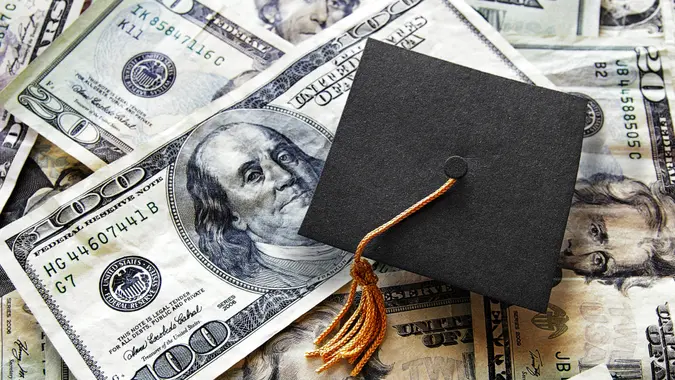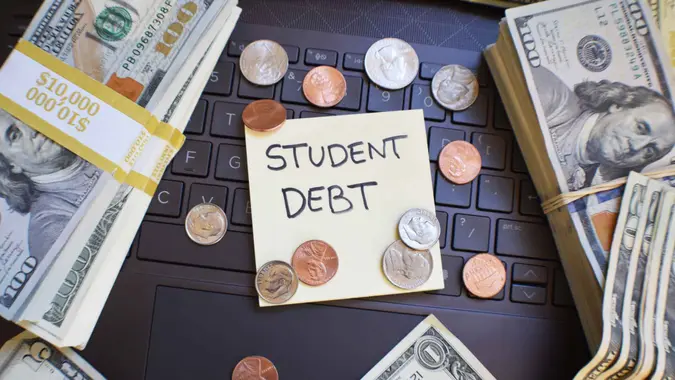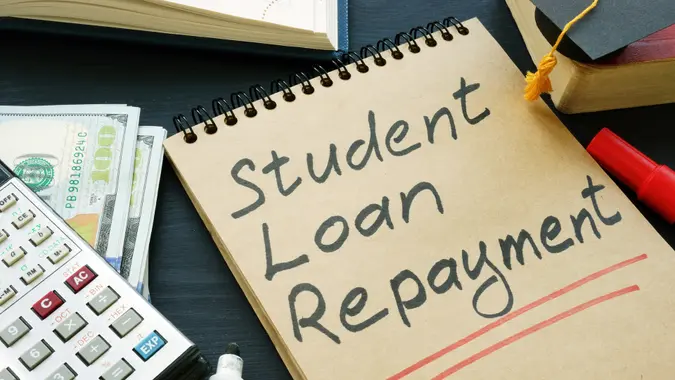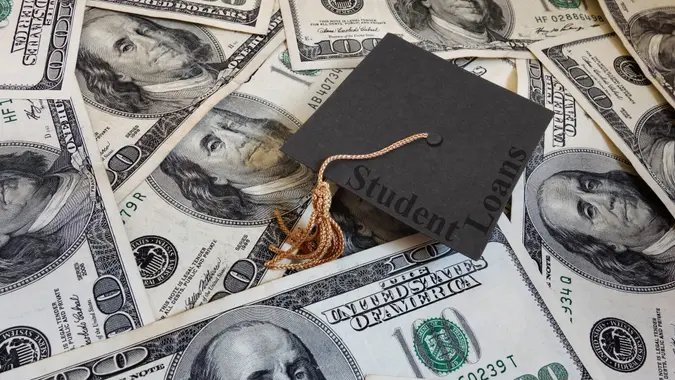Student Loans: Americans Are Trying These Extreme Measures to Afford Payments — Here’s What Experts Say to Do Instead

Commitment to Our Readers
GOBankingRates' editorial team is committed to bringing you unbiased reviews and information. We use data-driven methodologies to evaluate financial products and services - our reviews and ratings are not influenced by advertisers. You can read more about our editorial guidelines and our products and services review methodology.

20 Years
Helping You Live Richer

Reviewed
by Experts

Trusted by
Millions of Readers
The clock is ticking on the resumption of federal student loan payments after a payment pause that began more than three years ago. Payments are set to resume in October 2023 — and a lot of people will be forking over a lot of money.
Nearly 44 million Americans owe a combined $1.64 trillion in federal student loan debt, according to the Education Data Initiative. The average federal student loan debt balance is $37,717.
Adding student loan debt back to monthly budgets for the first time since March 2020 will be a challenge for many borrowers, and many are taking extreme measures to afford the payments.
A new survey of 2,210 U.S. adults from financial services company Empower found that one in three U.S. households expect their federal student loan payments to total at least $1,000 each month when payments resume in October.
About six in 10 respondents (59%) plan to cut back on discretionary spending to afford their student loan payments — which is what most financial experts recommend. But a significant percentage are also considering taking on credit card debt to make loan payments (32%) or curtailing their retirement savings (42%), according to Empower.
The latter two options are among the least desirable, experts say. Using credit cards to pay off student loans only transfers your debt from one place to the next. Reducing or tapping into your retirement savings could lead to financial problems later in life.
Here are some other ways Americans plan to deal with the resumption of student loan payments, the survey found:
- More than one-third of Millennials (38%) and nearly half of Gen Z (49%) say they are likely to consider moving in with roommates.
- 37% of Gen Z say they might trade in their car.
- One in 5 Americans say they are very likely to consider finding a second job.
- 45% of Millennials and 47% of Gen Z say they might relocate to a more affordable area, compared to 39% of the population as a whole.
- A quarter of Americans (26%) say they are very likely to delay buying a home once payments resume, including 30% of Millennials, 24% of Gen Z and 23% of Gen X.
Many of these options make financial sense but also represent major lifestyle changes. If you want to ensure the best repayment strategy — and avoid having to pursue extreme measures — experts recommend the following steps:
- Research alternatives: You might be able to lower your monthly loan payment and maintain your current lifestyle by looking into options such as the federal government’s Saving on a Valuable Education (SAVE) Plan, which replaces the existing Revised Pay As You Earn (REPAYE) Plan. SAVE could provide the lowest monthly payments of any income-driven repayment (IDR) plans available. You can find different options at studentaid.gov.
- Consider refinancing: Refinancing your loan with a private lender could be a good option because you might get a lower interest rate — especially if you have strong credit. Some lenders also offer rate discounts if you meet certain requirements.
- Put extra income into interest-bearing accounts: Some financial institutions are offering very high annual percentage yields of 6% or more right now, making it a good time to move your money into a high-yield account. Doing so will help you grow your wealth before student loan payments resume.
- Incorporate student loans into an overall debt strategy: One of the options cited by Empower is the snowball method, meaning you pay down the lowest balance first and then move on larger balances. This approach “builds momentum and motivation” by settling debts faster. Alternatively, you could try the avalanche method, which involves paying off the debt with the highest interest rate first and then moving on to the next highest rate. With this approach, you pay less interest over time.
 Written by
Written by  Edited by
Edited by 

























